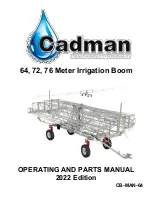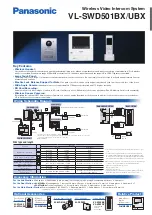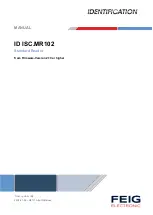
36
Setting up a Network
Section 2-4
2-4-2
Bus Termination
Termination resistors
In order to minimize cable reflections and ensure a defined signal level on the
data lines, the data transfer cable must be terminated at both ends with a ter-
minating resistor combination. The bus termination diagram is shown on the
left.
The bus terminator connects the two data lines via a 220 ohm resistor which,
in turn, is connected to VP 5Vdc and DGND via two 390 ohm resistors. Pow-
ering the terminator resistor via VP 5V and DGND ensures a defined idle
state potential on the data lines.
To ensure the correct functioning up to the highest baud rate, the bus cable
must be terminated at both its ends.
A missing bus termination can cause errors during data transfer. Problems
can also arise if too many bus terminators are fitted, since each bus termina-
tor represents an electrical load and reduces the signal levels and thus the
signal-to-noise ratio. Too many or missing bus terminators can also cause
intermittent data transfer errors, particularly if the bus segment is operated
close to the specified limits for maximum numbers of stations, maximum bus
segment length and maximum data transfer rate.
Inductors
In addition to the bus termination, additional precautions must be taken to
ensure proper operation at high baud rates, i.e. baud rates of 500 kbit/s and
higher. Due to the capacitive load of the station and the resulting cable reflec-
tions, bus connectors must be provided with built-in series inductors, of 110
mH each, as shown in the figure on the left.
Installing the inductors applies to all stations on the network, and not only to
the stations at both ends of the bus cable.
2-4-3
PROFIBUS Cable Connector
Bus Cable Connector
The plug connector to be used on the CS/CJ-series PROFIBUS-DP Master
Unit is a 9-pin male sub-D type, preferably encased in metal and having a
facility to connect the shield of the cable to the case or to pin 1. The cable
should be connected to the receive / transmit lines, pin 3 (B-line) and pin 8 (A-
line).
The use of special PROFIBUS-DP cable connectors, which are available from
several manufacturers, is highly recommended. Various models are widely
available, with or without the bus termination and inductors built-in. If provided
in the connector, the Bus termination can often be enabled or disabled
through a switch on the connector.
The special PROFIBUS-DP cable connectors often provide a convenient way
of connecting the cables. The figure on the left, provides an example of such a
bus cable connector.
A standard 9-pin sub-D plug can only be used if the PROFIBUS-DP Master
Unit is not at the start or the end of a bus segment, or on a stub line at a baud
rate of 500 kbit/s or less.
The two PROFIBUS data lines are designated A and B. There are no regula-
tions on which cable core color should be connected to which of the two data
terminals on each PROFIBUS device; the sole requirement is to ensure that
the same core color is connected to the same terminal (A or B) for all stations
throughout the entire system (across all stations and bus segments). The
390 Ohm
390 Ohm
220 Ohm
VP
B-Line
A-Line
DGND
Network
B-Line
A-Line
110 mH
110 mH
Network
To next
station
From
previous
station
Summary of Contents for SYSMAC CJ1W-PRM21
Page 2: ...iv...
Page 36: ...22 Basic Operating Procedure Section 1 5...
Page 52: ...38 Defining PROFIBUS DP in the Software Section 2 5...
Page 112: ...98 Allocated CIO Area Words Section 4 2...
Page 122: ...108 Command Response Reference Section 5 2...
Page 160: ...146 Replacing the Unit Section 7 8...
Page 174: ...160 Appendix...
Page 180: ...166 I O Data Conversions Appendix D...
Page 186: ...172 Configurator Error and Warning Messages Appendix E...
Page 187: ...173 Index...
Page 188: ...174 Index...
Page 190: ...176 Revision History...
















































